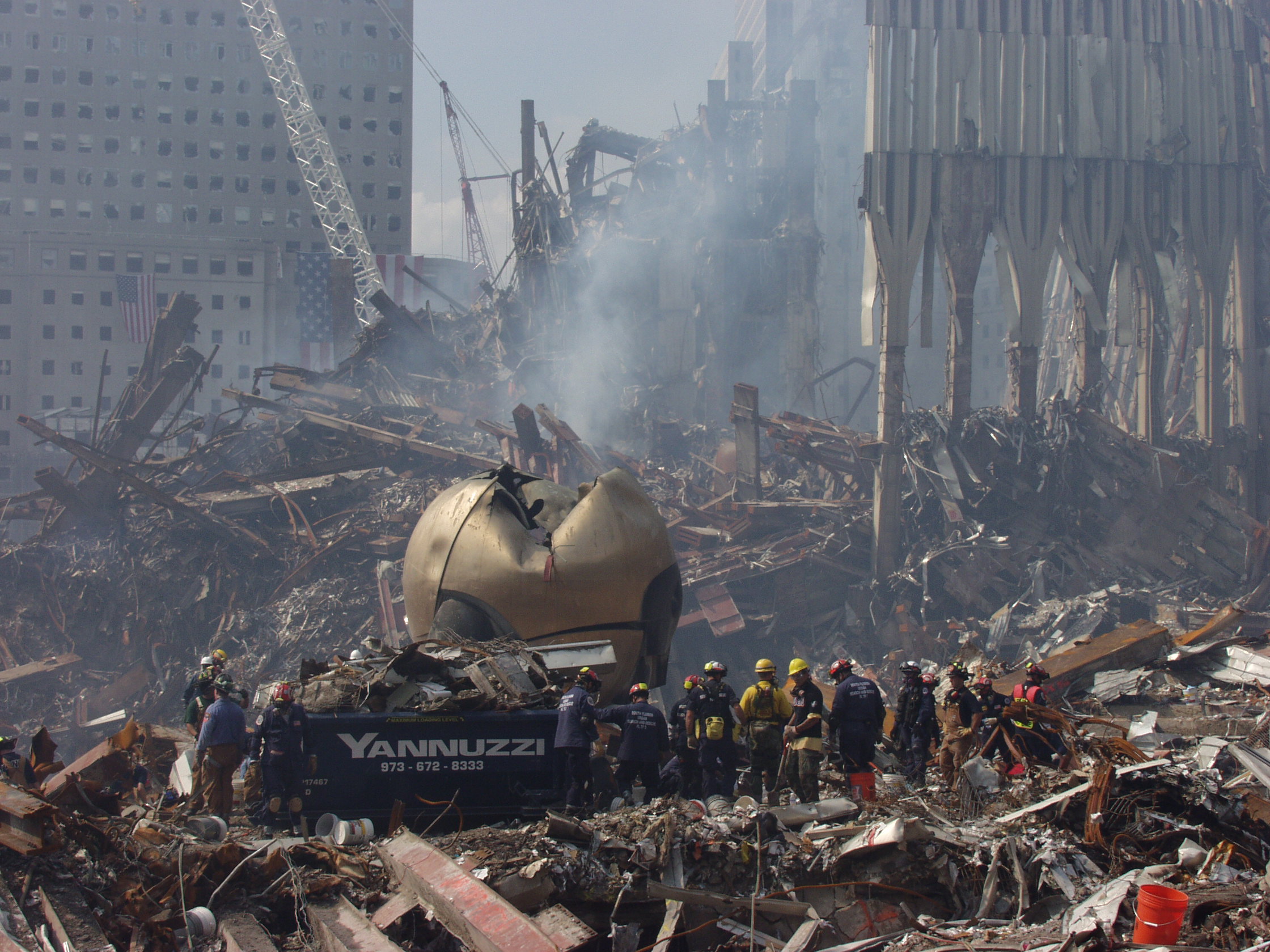Make a donation to the museum
Q & A: Museum Docents Share Their Experiences Surviving the 1993 and 2001 Attacks
Q & A: Museum Docents Share Their Experiences Surviving the 1993 and 2001 Attacks

Two 9/11 Memorial Museum docents, Vincent Boneski and Myrna Weinstein, are survivors of both the Feb. 26, 1993 bombing of the World Trade Center and the Sept. 11, 2001 attacks at the site. At the time of the first attack, Weinstein was working for the Port Authority of New York and New Jersey on the 61st floor of the North Tower. Boneski was an employee at ISO, an insurance company on the 14th floor of 7 World Trade Center. Their responses have been lightly edited.
1. Where exactly at the World Trade Center were you at the time of the explosion on February 26, 1993? What were your first thoughts in the immediate aftermath?
Weinstein: I was in my office, getting ready to go for lunch when the building rumbled and shook like a minor earthquake under my feet. Since there wasn’t a public address message, my manager wasn’t ready to give any directions to evacuate. When smoke started to fill the office from around the light fixtures in the ceiling, I put on my coat, grabbed my bag and headed to the nearest stairwell. When I entered the smoke filled crowded stairwell there was confusion about the cause of the smoke. No one believed it was a terrorist attack.
Boneski: I was having lunch one block up from the Trade Center on Broadway overlooking the plaza. There was no indication something had happened for me until my return to the office upon finishing lunch. I overheard a server at the restaurant say, “Citibank just blew up,” which was approximately where in the World Trade Center shops/concourse the bomb had detonated. My immediate reaction was disbelief when I headed back to the office.
2. Did the first attack on the World Trade Center change your perception of the safety of your surroundings? (If so, how?) Did you have any trepidation in returning to work?
Boneski: Yes, I was very uneasy, but tried to be brave. As I was on the PATH train that resumed that coming Monday on the way into work, I expected to see a lot of damage, but all I saw was some ceiling tiles that had come off. There was much unanswered in those first few days. Perhaps ignorance was bliss in a way and we didn’t comprehend the amount of damage in the garage because unlike 9/11, it wasn’t visible to the general public.
3. Apart from relief, how did you feel about surviving both the 1993 and 2001 attacks as different as they were and as a whole experience?
Weinstein: Initially after 2001, I felt highly sensitive to any loud noise, the smell of smoke and fire alarms. I credit surviving the first event and lessons learned from 1993, helped me to survive 2001. Why I survived when many of my coworkers did not, is still difficult for me to understand. I was going to an elevator to go 78th floor and could have been trapped in an elevator. I was midway from my office and the elevator when the plane struck the building.
4. Do you have any personal artifacts from your time working at the World Trade Center? If so, what are they and why are they important to you?
Weinstein: I still have my silk suit and high-heeled shoes that I wore on 9/11. When I escaped that day, I didn’t change out of my heels into my flat shoes. I left with my bag and what I was wearing that day. All of my personal possessions in my office went down in the building.
Boneski: Yes, I have my ID badge from the World Trade Center and some items from the days after (for example, prayer cards and patriotic pins) in a water bottle with my company’s logo on it. Sort of a time capsule, I open it on occasion and remember what used to be and what happened.
5. Describe your decision to return to the site and volunteer your time as a docent in the 9/11 Memorial Museum after experiencing both attacks. Why did you feel it was important to do so?
Weinstein: As a survivor, I honor my coworkers who lost their lives. And as an educator for most of my professional life, it is important to provide the most accurate account of the events of these two terrorist attacks.
Boneski: I volunteer because I know that I could have been a name on a memorial just as my lost coworkers are. Knowing about the Trade Center, not just what happened those days in 1993 and 2001 allows me to give visitors perspective on the life that was there before these events and understanding lives like ours that ceased too soon. I also feel my volunteering gives something needed in all that ceased too soon. I also feel my volunteering gives something needed in all this and that’s hope. There is chance and fate that can make a difference even in terrible circumstances.
Previous Post
The Twisted Hunk of Metal that Helped Bring the 1993 WTC Bombers to Justice

When the story of the 1993 World Trade Center bombing arrests is told much is made of how authorities were waiting for one of the plotters when he returned to the rental company in Jersey City looking to get his $400 deposit back for the truck that was packed with explosives.
Next Post
The Sculptor Who Created The Sphere, a Symbol of Resilience, Dead at 92

The sculptor who created The Sphere, the sculptural centerpiece of the World Trade Center site that became a symbol of resilience when it was damaged but left standing on 9/11, has died at 92.